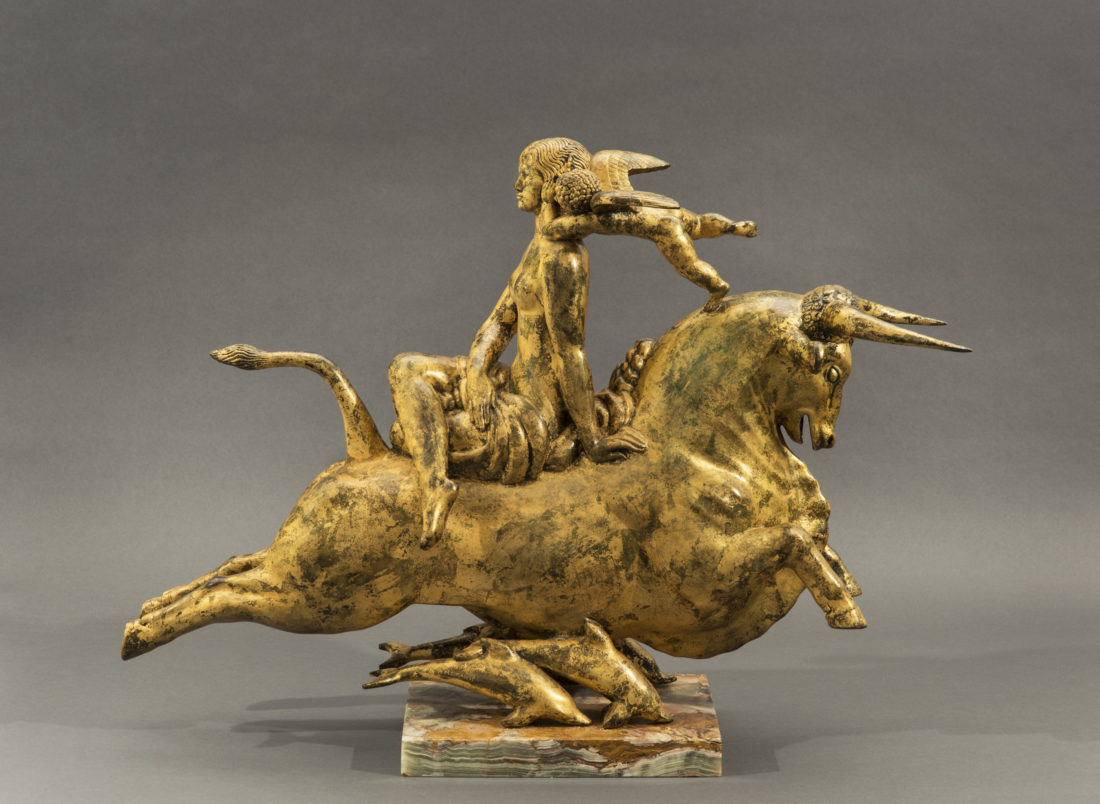Paul Howard Manship was born in Saint Paul and came East in 1905 for formal art studies and training. The impressive group of mentors, schools and awards ultimately lead to a fellowship at the American Academy in Rome in 1909. During that three-year period abroad he traveled extensively, deeply immersed in the study of antiquities. The exposure to the iconography, materials and design of the ancient Egyptian, Assyrian, Indo-Greek as well as classic Greek and Roman cultures influenced his own art for the next half century. Returning to live in Paris in 1922, only added to his sophisticated vernacular.
Manship was immediately and constantly in the public eye with awards, sold out exhibitions and more importantly major public commissions. Among those in New York included the AT&T Building (195 Broadway), the J. Pierpont Morgan Memorial for the Metropolitan Museum, the Bronx Zoo gates, the Prometheus Fountain at Rockefeller Center, the monumental sundials for the 1939 World’s Fair and many more works for his adopted city – as well as several international commissions. A list of Manship’s private patrons is equally overwhelming and includes Rockefeller, Untermeyer, Harriman, McCormick, Pratt and Schwab.
Manship’s elegant style – often described as Art Deco – was motivated by design: stylized forms, simple cleanly defined surfaces and precise ornamentation and detail. He was also a master of technique and the chasing and patination of his bronze casts are exquisitely controlled. Further he was trained to work in all sculptural materials and methods, even as a medalist. Another aspect of Manship’s uniqueness was his ability to model a sculpture that translated from the monumental to a statuette without a loss of quality or scale.
Paul Manship was the master sculptor for the American audience in the first half of the 20th Century. His sculptures were appropriate yet progressive, tours de force of engineering yet beautiful understandable figurative images which were also true representations of a modern world.









